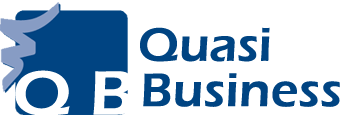Having an emergency fund is one of those non-negotiable pieces of financial advice that everyone should follow. What has more leeway is the emergency fund location. Some people are divided on where you should keep your savings.
Here are two mainstream options and some other accounts to consider with caution.
1. Bare-Bones Recommendation: A Basic Savings Account
A basic savings account is a safe place to store your emergency fund. It’s separate from your checking account, which is where you do most of your spending. This separation prevents you from using your savings on non-emergencies, but your savings will still be easy to access in an emergency.
While there’s nothing wrong with this basic account, it earns that title for a reason. It’s the bare bones of savings and investments.
It provides a safe, FDIC-insured place to store your cash. However, these basic accounts won’t deliver much return on your investment. The average annual percentage yield (APY) is around 1% — a far cry from today’s 4.5% inflation rate.
2. Next Level Advice: A High-Yield Account
Savvy savers turn to high-yield savings accounts to help them fight back against inflation. These accounts offer all the same security as the basic ones, but with the added bonus of a higher interest rate. In some cases, you may snag a 5% APY.
A Word of Caution about High-Yield Accounts
Some banks build impressive interest rates into their services at no cost. Others only offer these high APYs with restrictions.
Beware of banks that apply restrictions on your withdrawals. Some may place holds on transfers, delaying how quickly you can get your hard-earned cash. Others limit how often you can withdraw. You may even encounter accounts that come with monthly fees and other charges.
While a high rate of return is important, it’s not important enough to risk your accessibility. If you store your savings in an account that delays withdrawals, it could prevent you from getting the cash you need in time. You might even have to consider putting your emergency on a line of credit.
An online line of credit may provide some financial flexibility in these unusual circumstances. You can put your expense on this account and pay it off when your bank releases your savings. Alternatively, it can serve as a backup to an accessible emergency fund that falls short of what you need.
Applying is simple if you don’t already have a line of credit. All you need to do is research your options so that you understand how much it will cost when you use it.
Proceed with Caution: Alternative Options
Basic and high-yield accounts aren’t the only options available today. There are plenty of other accounts that may offer greater interest rates.
However, you should pay close attention to their terms and conditions. Many alternatives can only offer you larger APYs because they take something in return.
- Guaranteed Investment Certificates (GICs) take between six months and five years to mature, locking you out of your savings during this term.
- Government Bonds have similar holds and withdrawing early may incur penalties.
- Money Market Funds have fluctuating interest rates, so you might see your APY drop significantly. They’re also not FDIC-insured.
Technically, you can deposit your emergency savings anywhere you want. But it’s important you know the pros and cons of each account to keep your finances safe. Keep this in mind as you search for a safe place to store your emergency.

















